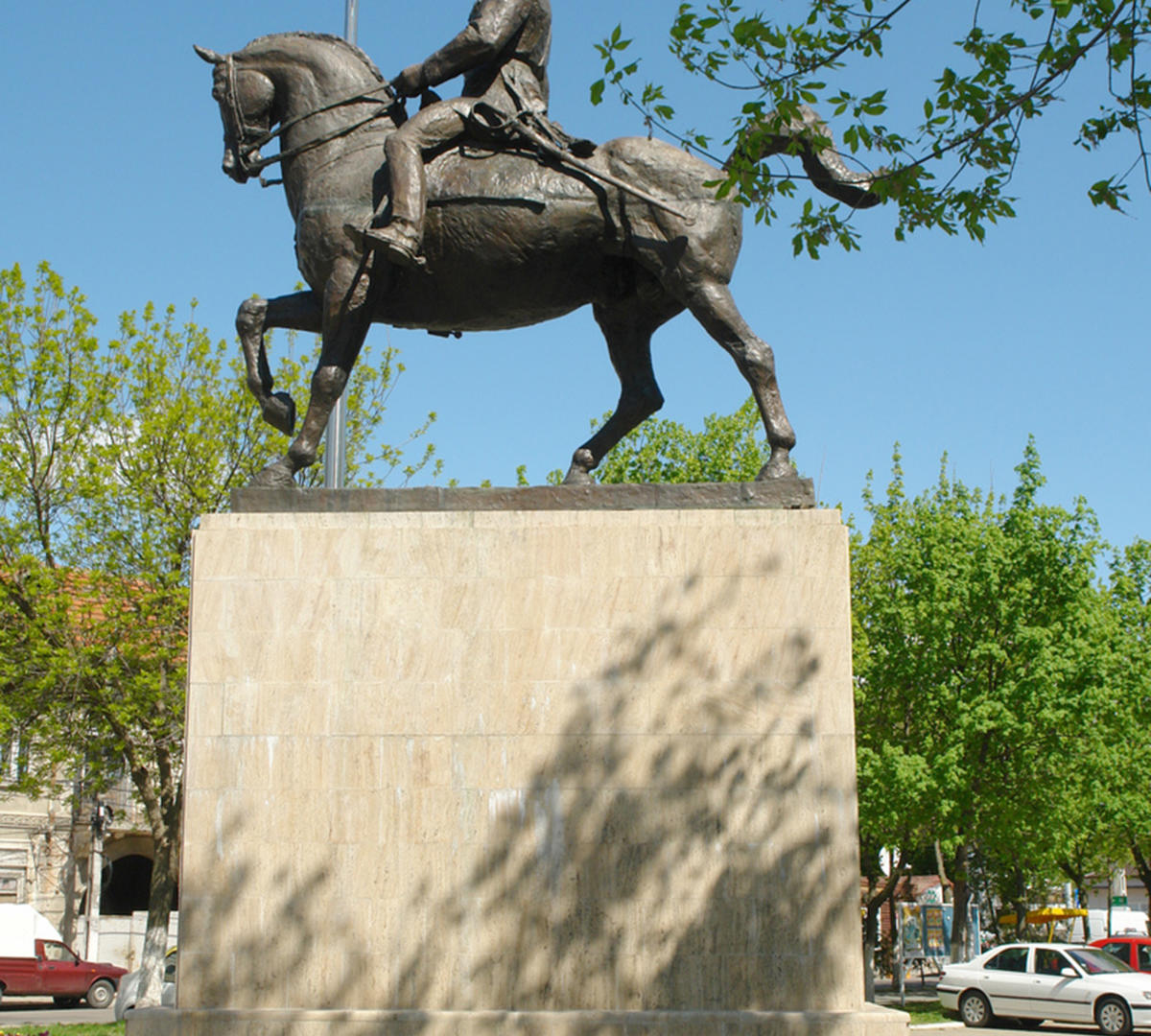The equestrian statue Carol I Calarasi
Category MonumentLOCATION
Piata Prefecturii, Calarasi, Romania
DESCRIPTION
King Carol I's equestrian statue is made of bronze, weighs about 5 tons and was valued at 1,250,000 euros. The statue was made by Florin Codre and donated to Calarasi by the Ministry of Culture and Religious Affairs. The City Hall of Călăraşi took care of the construction of the marble socket and the arrangement of the space where the monument was placed. The statue depicts King Carol I in military uniform, riding on a horse, and is placed on a marble socket of about 4 meters. Together with the statue in natural size, the whole ensemble is about 10 meters high. On the façade of the monument is written, under the emblem of the Kingdom of Romania: "Carol I (1839-1914) King of Romania".
HISTORY
The year 2006 was dedicated to the memory of King Carol I. That year 140 years have passed since the proclamation of Prince Carol of Hohenzolern as ruler of Romania (10 May 1866) and 125 years since the proclamation of the Kingdom of Romania (1881). In this context, within the actions devoted to the Carol I Year, the Ministry of Culture initiated several cultural projects, including the achievement of the equestrian statue of King Carol I.
The order of the realization of this important historical monument was entrusted by the Ministry of Culture, the sculptor Florin Codre, a plastic artist with remarkable achievements in the field of public monuments in Romania and abroad.
The sculpture was finished in the summer of 2007, and the location for its opening was in Calarasi.
The monument was inaugurated on May 9, 2008. At the invitation of the local authorities, His Majesty King Michael I and His Royal Highness Prince Radu of Romania took part in the unveiling of the equestrian statue of King Carol I.
Together with the two representatives of the royal house of Romania, the solemn celebrations were attended by representatives of the Government, of the local public administration, officials, representatives of the church, numerous local personalities.
In his profoundly excited discourse, His Majesty King Michael I said, "I am glad to unveil the statue of King Carol I in a place so important for the War of Independence. It is for the first time after the Second World War when a statue of King Carol I is raised in Romania ". Since its inauguration in 2008, the equestrian statue of King Carol I represents an emblematic historical nonument for the city on the banks of the old river.
Carol I of Romania, Princes of Hohenzollern-Sigmaringen, on his full name Karl Eitel Friedrich Zephyrinus Ludwig von Hohenzollern-Sigmaringen (born on 20 April 1839, Sigmaringen - died on October 10, 1914, Sinaia) was the ruler, who led the Romanian Principalities and then Romania after the forced abdication of a coup of Alexandru Ioan Cuza.
From 1867 he became an honorary member of the Romanian Academy, and between 1879 and 1914 he was a protector and honorary president of the same institution.
In the 48 years of his reign (the longest reign in the history of the Romanian states), Carol I obtained the independence of the country, thanks to which he greatly increased his prestige, redressed the economy, endowed Romania with a number of institutions specific to the modern state laid the foundations of a dynasty. He built the Peles Castle in the Carpathian Mountains, which is now one of the most visited tourist attractions in the country. After the Russian-Turkish War (1877-1878), Romania won Dobrogea (but lost southern Bessarabia), and Carol ordered the raising of the Danube bridge between Fetesti and Cernavoda, linking the new province to the rest of the country.
The most notable fulfillment of the reign of King Carol I and his successors during the monarchical period of the modern history of the country was the failure to solve the typical problems of a country whose economy was based on agriculture and whose population was represented by the overwhelming majority of peasants . After the reign of Carol I, the situation of the Romanian peasantry begins to deteriorate seriously, as the landowner, in order to cope with the foreign markets, continuously raises the exploitation level of the peasantry. The unjust system for the overwhelming majority of Romania's population at that time was moreover an exception in the region, which did not, however, encourage the sovereign to initiate an agrarian reform program, which led to repeated social explosions in rural areas at the end of the century the 19th and the beginning of the 20th century.
The result was that the main sector of the Romanian economy at the time, in which the overwhelming majority of the population was trained, remained in a primitive state.
SITE SIGNIFICANCE
Memorial sculpture
VISITOR INFORMATION
It is free to visit.
OTHER INFORMATION
SITE CLASSIFICATION
Memorial sculpture




